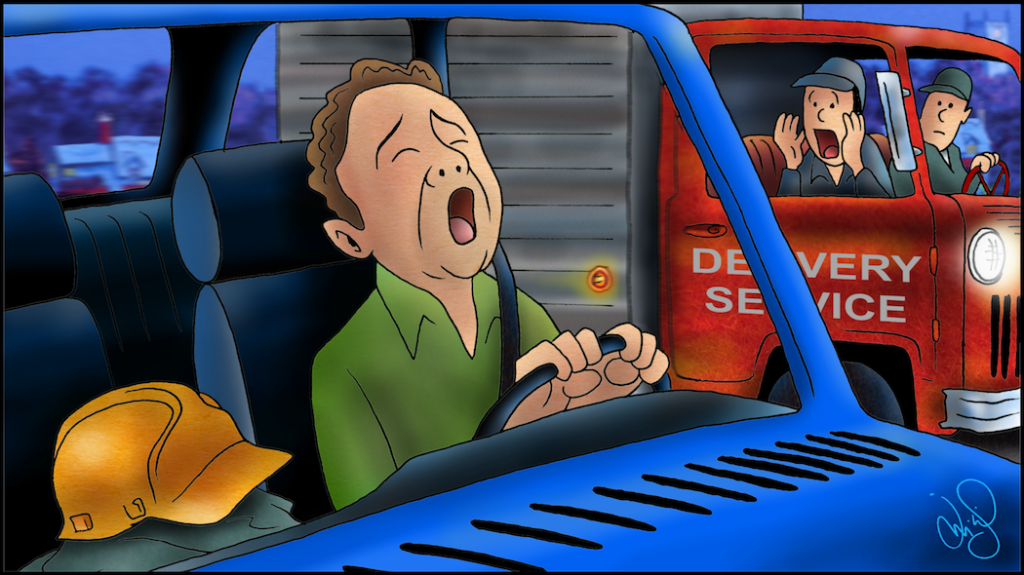Sleeping less than five hours a day could elevate your risk of being involved in a car accident. In our classroom fatigue training sessions, many of the shiftworkers who participate indicate they sleep about five hours on days they work. What about you? I can remember many mornings after night shift driving drowsy on the 30 minute commute home. Sometimes I would have to drink a caffeinated beverage to help me stay awake. The effects of the caffeine would make it more difficult to go to sleep when I got home.
The AAA Foundation for Traffic Safety published a report in December 2016. The results of this study indicate that drivers who usually sleep for less than five hours daily, drivers who have slept for less than seven hours in the past 24 hours, and drivers who have slept for one or more hours less than their usual amount of sleep in the past 24 hours have significantly elevated crash rates.
The estimated rate ratio for crash involvement associated with driving after only four to five hours of sleep compared with seven hours or more is similar to the U.S. government’s estimates of the risk associated with driving with a blood alcohol concentration equal to or slightly above the legal limit for alcohol in the U.S. The report and other information, including a slide show that could be used as part of fatigue education in your company, are available at https://www.aaafoundation.org/acute-sleep-deprivation-and-crash-risk.
If we are not getting adequate sleep and if we agree that drivers who have not gotten adequate sleep have an increased risk of an accident, what are we supposed to do to avoid being asleep at the wheel? I don’t know many people who will take a nap after shift change so they will be less sleepy before driving home. Yet, we know that sleep is the only way to reduce fatigue.
A major concern in drowsy driving is delayed reaction time. I think this is a particular risk in metropolitan areas with lots of stop and go traffic during rush hours. We are in Houston and Atlanta regularly, and I wonder how many people are drowsy and whether or not all of them will react in time to avoid an accident. Let’s face it; most of us do not pay as much attention while driving as we should.
There is another useful resource at drowsydriving.org. There are certain warning signs of drowsy driving listed there:
- Difficulty focusing, frequent blinking, or heavy eyelids
- Daydreaming; wandering/disconnected thoughts
- Trouble remembering the last few miles driven; missing exits or
traffic signs - Yawning repeatedly or rubbing your eyes
- Trouble keeping your head up
- Drifting from your lane, tailgating, or hitting a shoulder rumble strip
- Feeling restless and irritable
Just like we should use fatigue countermeasures on the job, we should use fatigue countermeasures to avoid drowsy driving. Agencies and governments tend to focus on educational programs and warning signs like one I saw in Europe that had a picture of a sleeping kitten and the words “If You are Sleepy, Take a Break.” It is up to us to take precautions to reduce the risks of an accident while driving.
Individuals need to take responsibility to get an adequate amount of sleep every 24 hours. If you have sleep disorders or other problems that contribute to inadequate sleep, see a medical professional. If you are too sleepy to drive, do not drive.




